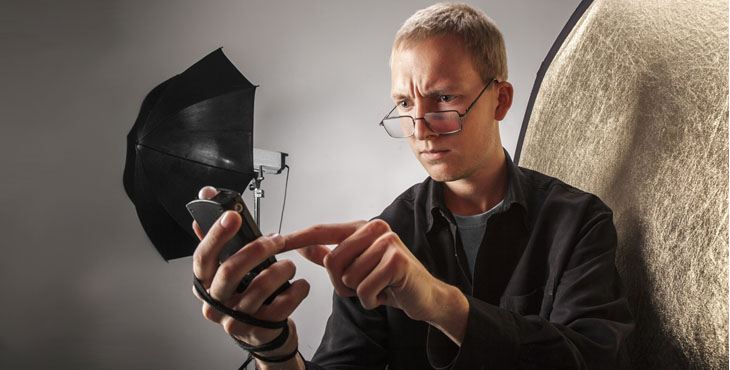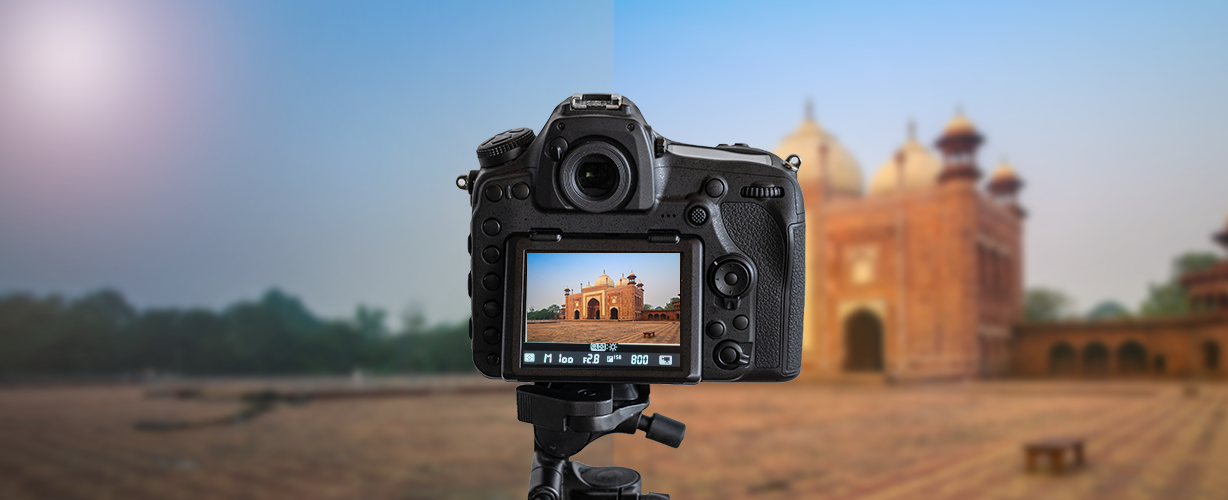In a previous blog post, we talked about the art of flash photography. In this article, SmartPHOTOeditors delves into the advantages and disadvantages of external flash photography.
A Brief History of Flash Photography
Early photographers depended upon natural light from the sun. A combination of good weather and long days contributed to the best photography. But even the earliest photographers probably yearned for a “better way” to illuminate their subjects when natural light was not adequate or cloudy days made studio work non-productive.
The beginning of artificial light photography can be traced to 1839 — Ibbetson photographed microscopic objects by using limelight. An early French photographer named Nadar used battery-operated lighting to capture images in Paris sewers in 1861. Fast forwarding to today, flash units are electronic flash tubes. In between, there were many flash technology iterations that included one-time flash bulbs to replace the use of flash powder in an open lamp.
External Flash Photography Definition
What is an external flash? It is a detachable item of photographic equipment that is designed to solve the age-old problem of inadequate light for photographers by providing a portable and intense light source that can be controlled by the photographer. This utilitarian piece of equipment is typically mounted by using the “hot shoe” on top of the camera — the mounting point that includes metallic contact points surrounded by an inverted square-off U-shaped piece of metal to synchronize the flash with taking a photo.
When Is External Flash Necessary and Useful?
The “built-in flash” on cameras is only rarely up to the demanding job of lighting the subject without adding offsetting problems such as shadows and flattening out of the subject. Modern DLSR cameras do effectively reduce some of these negative lighting consequences by allowing photographers to adjust the ISO. However, with sudden movement by the subject, the normal result — ghost-like images — means that photographers are often in need of a better flash strategy that can be facilitated with a more flexible and capable external flash.
Better Light Distribution and Wide Angle Shots
The ability to control contrast and brightness will almost always produce better photography. Contrast refers to the difference in brightness between the darkest and lightest portions of the photo. The distribution of the light source is the primary determinant of the overall contrast.
With localized light, the subject will be illuminated with direct light while the opposing side will appear nearly black because it is only receiving light that bounces off of surfaces. By distributing light more evenly, light will hit the image sphere from a wider angle — and any highlights and shadows will be softer and less intense (usually a welcome result).
To facilitate maximum control over angles of light, most external flashes rotate. Unfortunately, built-in flashes cannot handle illuminating wide angle shots. In comparison to built-in flash units, a good external flash can usually handle four times the distance — in large part because the external flash can produce 15 times as much power. External flashes have an independent set of batteries that facilitate faster recycling without draining the camera’s batteries.
Red Eye Reduction and Cleaner Images
External flashes also provide a sound strategy to reduce red eye and produce cleaner images because the light does not need to be close to the camera’s center. Photographers using external flash units have maximum freedom in positioning the light source where they want it — including above and from the side.
Cleaner images can also be produced in sunny outdoor conditions with external flash photography. Handheld diffusers are a critical part in bounced flash and fill flash effects in outdoor flash photography — external flash diffusers are easier to use and produce cleaner-looking photos than diffusers designed for built-in flash units. Additionally, the color of flash lighting can be changed with color diffusers.
Disadvantages of Using External Flash in Photography
The primary disadvantages to consider regarding external flash photography typically boil down to two considerations — weight and cost.
However, cost does not need to be a disadvantage. Photographers should view buying an external flash as a one-time investment that can work for many years on different cameras. Costs can range from $30 to more than $800 — simply choose an external flash that does not break your photography budget.
Many external flashes weigh more than the camera. But remember that the size of the external flash is what gives it such an edge in comparison to built-in flashes. The bigger size does add weight — with accompanying impressive results in photo quality. You will need to be the final judge as to whether cost and weight considerations make acquiring an external flash the right move for you.
No matter how you decide to approach flash photography, SmartPHOTOeditors can help reduce the time and money spent on photo editing. Please leave your comments about external flash photography below and then share with your social media circles by using the social buttons.
– SmartPHOTOeditors
SmartPHOTOeditors


